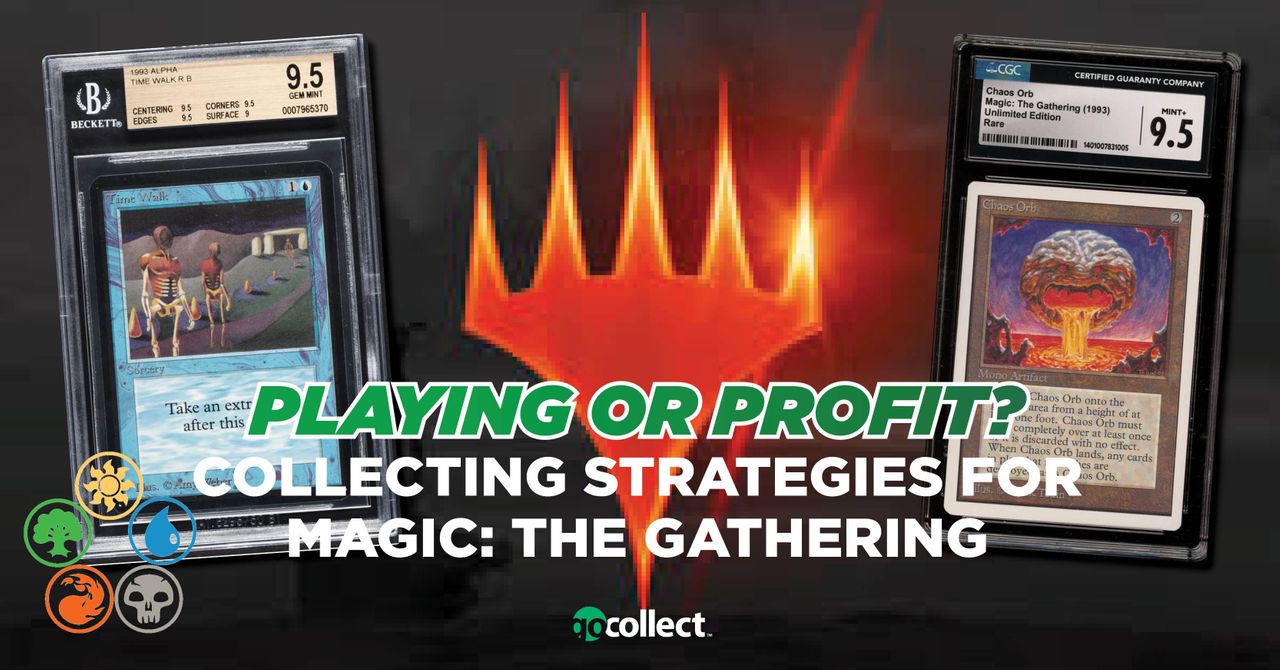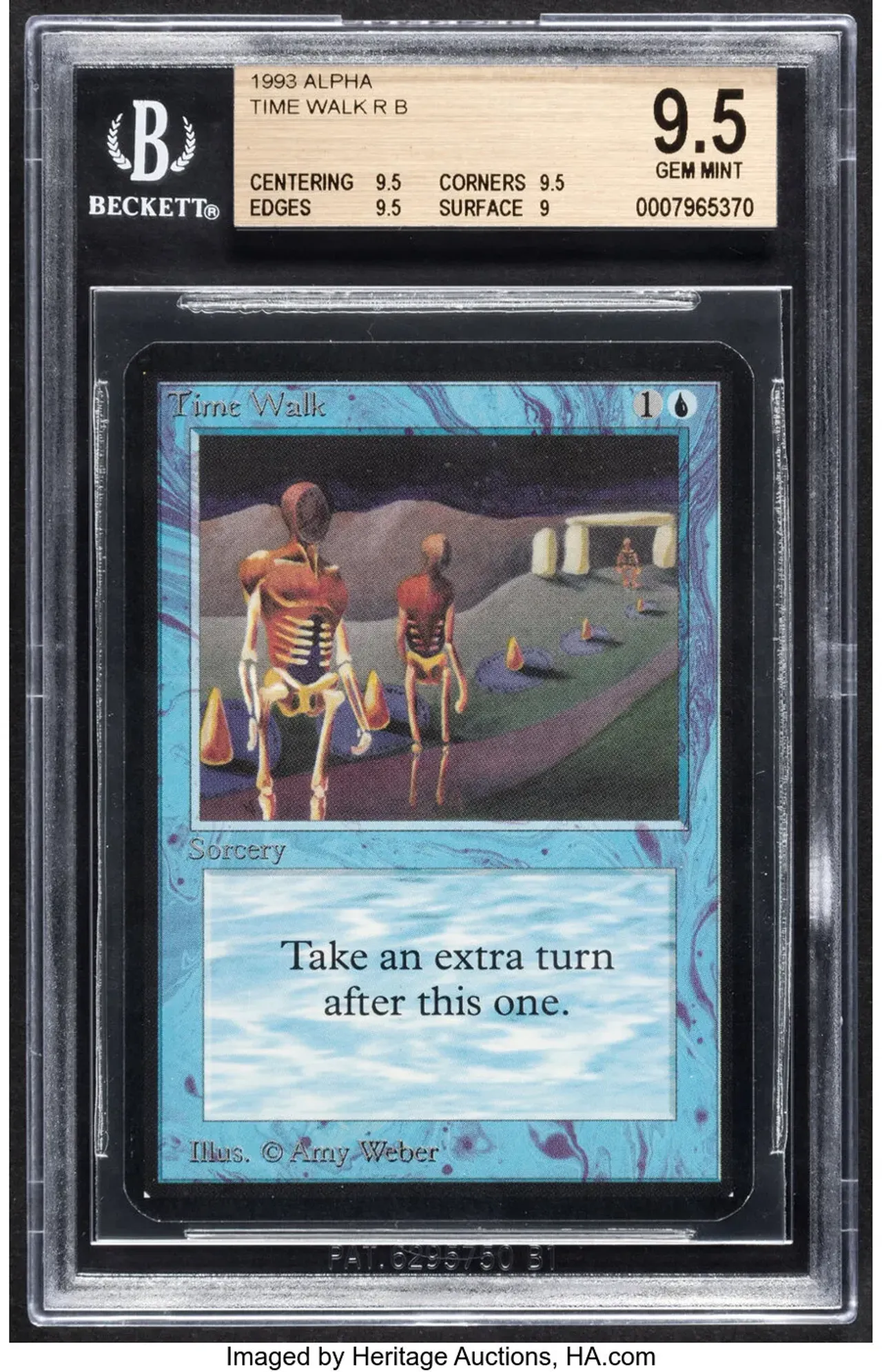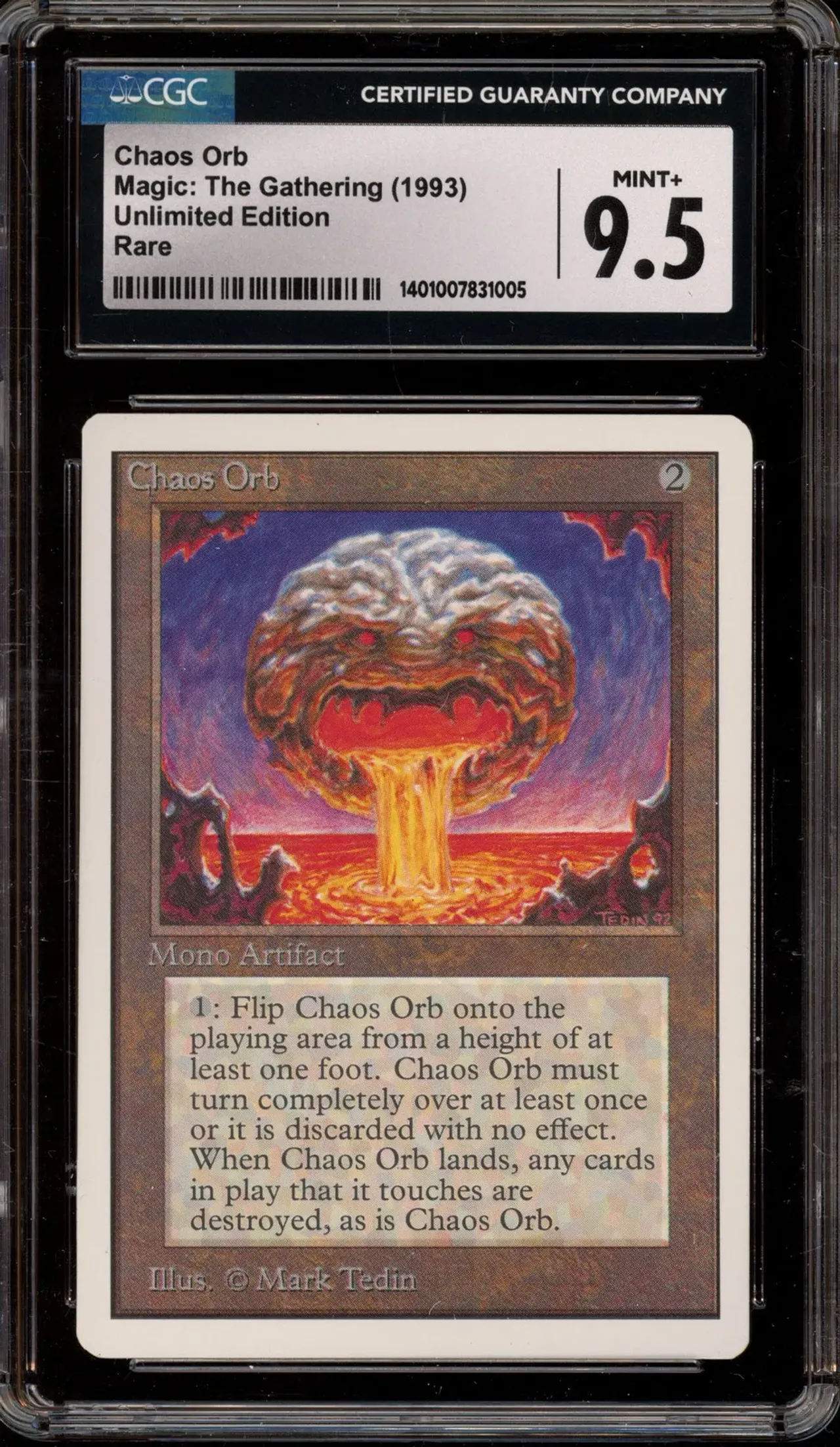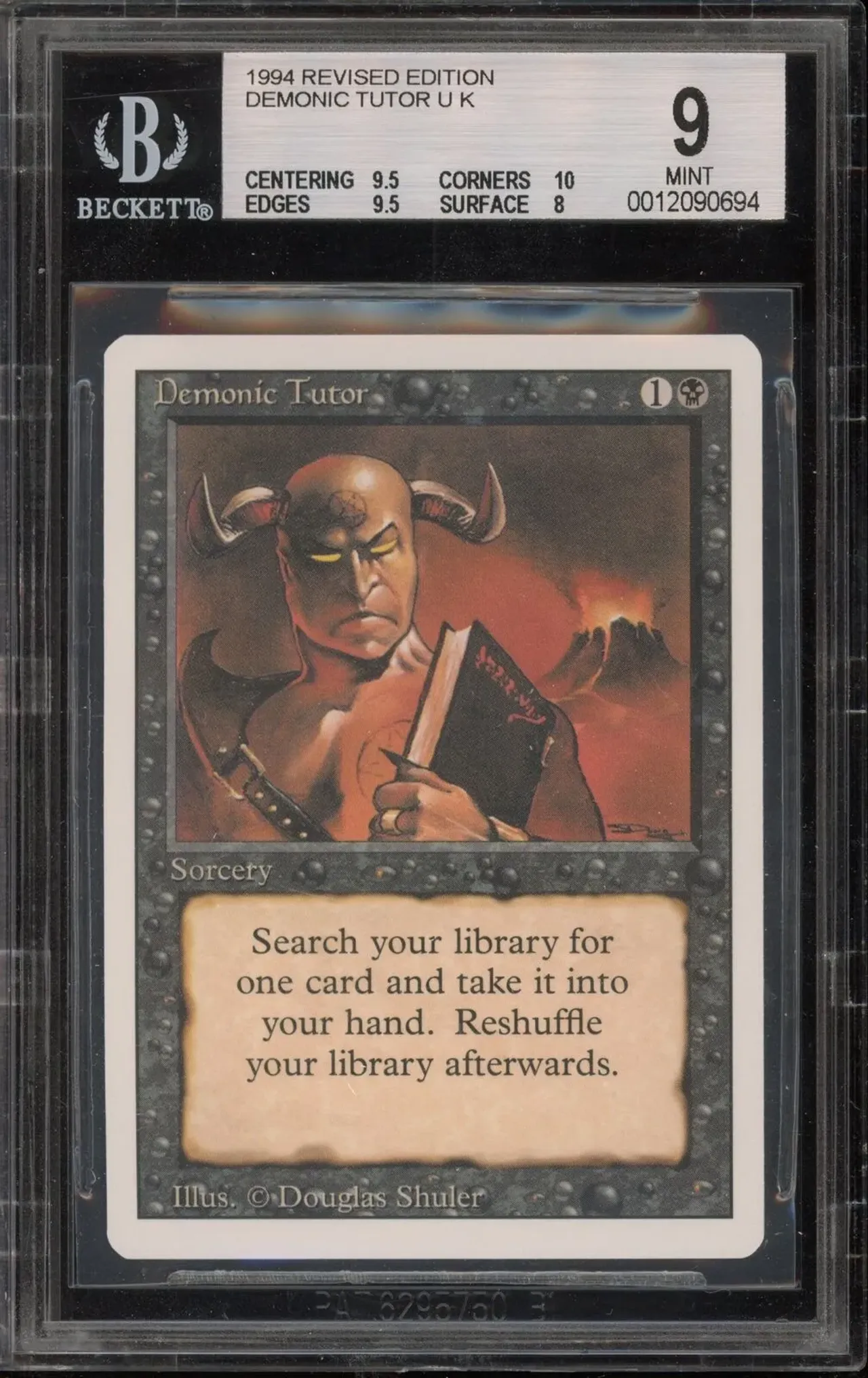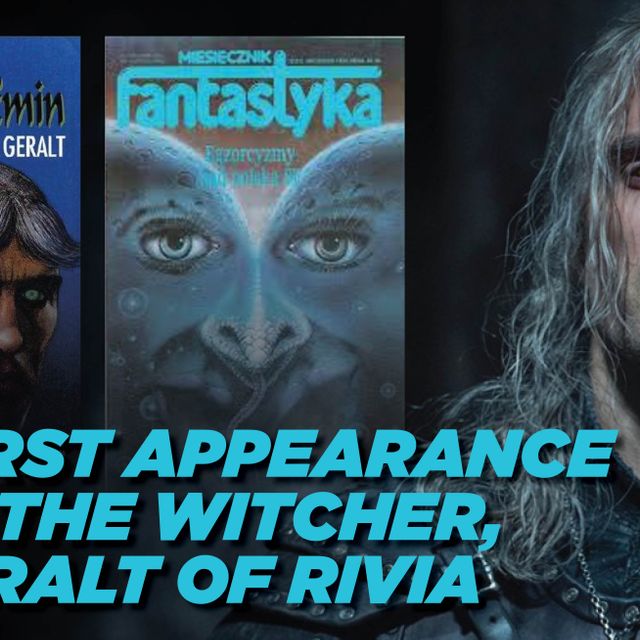For more than thirty years, Magic: the Gathering has captivated millions of players around the globe. What began as a passion project by Richard Garfield in 1993 has evolved into the world’s foremost collectible card game, and a billion-dollar phenomenon that effortlessly draws in new players while retaining old fans.
But when you sit down to build your collection, you might ask yourself: am I collecting to play, or collecting to profit? The answer can radically change how you approach the game. Understanding the nuances of MTG collecting is essential for anyone looking to build a meaningful collection, whether your goal is to assemble the perfect deck to preserve gaming history, or just to play with friends. MTG generates over $1 billion in revenue annually, making it not just a game but a significant cultural and economic force.
Alpha
When it comes to collecting for profit, the original 1993 set – or the Alpha set, as it's known – is where it’s at. Some cards from this set can command astronomical prices in the collector’s market. April 2024 saw a CHC 10 Alpha Black Lotus reach $3 million – a staggering amount that instantly made it the most expensive MTG card ever sold.
While an Alpha Black Lotus in such pristine condition will likely be out of most people’s price range, other Alpha cards with high grades are not as expensive as you might think. Prices fluctuate a lot based on based on card rarity, and especially condition. An Alpha Counterspell graded 8.0 sold on January 17th for $1,100, although prices at auctions can be surprising – an 8.5 graded copy went for less than that, auctioning for $750 on May 7th. These cards are definitely costly, but perhaps still in the price range of collectors with some cash to spare.
Alpha’s Time Walk card, featuring some of the most striking art in MTG history, tends to go for thousands. A 6.5-graded copy went for $6,563 in April, while a 3.5-graded copy went for $4,399 last November, showing how just a few points in grading can mean a difference of thousands of dollars.
Beta and Unlimited
For those with less purchasing power, Beta and Unlimited represent ways to collect early cards with that iconic old artwork without going bankrupt. It’s incredible how much cheaper Beta cards can be than Alpha cards, despite both sets being produced in the same year and featuring the same artwork. The distinction comes down to minor printing differences along with the prestige of owning a true first-edition card.
Looking at Counterspell again, an 8.0-graded Beta card went for $350 on May 7th – less than half the typical price of the same card from Alpha. Most Unlimited cards will sell for significantly less than Alphas and Betas. For example, an 8.5-graded copy of Invisibility sold in March for just $28. For anyone interested in playing with the original sets, Unlimited cards represent a superb entry point – although putting together a deck of 60 cards might still set you back quite a bit.
Some Unlimited cards do still continue to fetch high prices due to particularly iconic artwork and rarity – you won’t be surprised to hear that the legendary Black Lotus still goes for thousands, even from the Unlimited set. April 2025 saw a number of sales of the card, and even with condition varying, few went for less than $10,000.
Chaos Orb, another popular Unlimited card, maintains strong interest among collectors. One graded 6.5 went for $1100 in April, 2025.
Later Sets and Tie-In Editions
For anyone who wants to get into the game as quickly as possible, starter kits are ideal. You’ll sometimes find Standard format starter decks from specific sets, such as Bloomburrow. (which has a fantastic woodland creature theme which will be immediately familiar to fans of the board game Root), as well as pre-built Commander format decks.
A good strategy combining playing and collecting is to purchase two of each new set – one to play with and one to keep sealed. Prices for MTG cards generally rise as new sets and editions replace older ones. Even mass-produced sets like the starter kit decks will likely increase in value over time.
Those with unlimited resources can, of course, collect as many rare and overpowered cards as they like and build them into a near-unassailable deck, but for casual play, a cheaper deck with more common cards might be a lot more fun. Of course, you could also build a deck by simply collecting cards with your favorite pieces of artwork or set themes.
In recent years, MTG has released a number of crossover sets with other franchises, from Fallout to Forgotten Realms to Assassin’s Creed to Lord of the Rings (which featured a controversial one-of-a-kind “one ring” promotional card worth hundreds of thousands of dollars – MTG fans urged whoever got it to cast it into a volcano). Some of these sets will have collectible appeal beyond the world of MTG itself, especially when cards featuring characters like Karlach or Astarion from Baldur’s Gate 3 are released – these cards sold out within hours of going on sale.
End Step
Anyone new to the game might have to employ a demonic tutor just to get a basic understanding of what is widely regarded as one of the most complex tabletop games in the world. Magic is remarkably easy to get into, but can take years to master, and so many new cards are coming out all the time leading to a near infinite number of possible interactions.
The best place to jump in is at whatever aspect appeals to you most – collect cards with your favorite art, build an unstoppable deck, or just check out the crossover decks featuring your favorite franchises. Though the world of Magic: the Gathering can feel overwhelming at first, you'll get years of enjoyment out of it, and many in the Magic community will always be ready to help.
